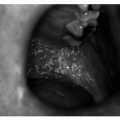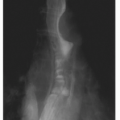All patients with peripheral arterial disease (PAD) require atherosclerotic risk factor modification, antiplatelet therapy, and education regarding lifestyle modifications, including exercise therapy.
Consider revascularization for disabling claudication, ischemic rest pain, gangrene, or ulcers.
Below-knee amputation is recommended for ambulatory patients with adequate cognitive ability to participate in rehabilitation.
Bedridden patients and those with severe dementia will have fewer complications with an above-knee amputation.
Perioperative β-blockade is used to reduce the risk of coronary artery events.
Surgery has better long-term results but higher perioperative risks.
Technologic improvements in angioplasty/stenting have improved results and lowered the risk in patients.
Percutaneous intervention is performed with local anesthesia and sedation; therefore, cardiac stress testing is rarely required.
After surgery or angioplasty/stenting, surveillance vascular laboratory studies are used to monitor for progression of disease or graft/stent stenosis.
TABLE 25.1 TOPICS ASSOCIATED WITH PERIPHERAL ARTERIAL DISEASE | ||||||||||||||||||||||||||||||||||||||||||||||||||||||||||||||||
|---|---|---|---|---|---|---|---|---|---|---|---|---|---|---|---|---|---|---|---|---|---|---|---|---|---|---|---|---|---|---|---|---|---|---|---|---|---|---|---|---|---|---|---|---|---|---|---|---|---|---|---|---|---|---|---|---|---|---|---|---|---|---|---|---|
|
the resulting plaque formation, progression, and eventual plaque instability.7
TABLE 25.2 DIFFERENTIAL DIAGNOSIS OF EXERCISE-INDUCED LEG PAIN | ||||||||||||||||||||||||||||||
|---|---|---|---|---|---|---|---|---|---|---|---|---|---|---|---|---|---|---|---|---|---|---|---|---|---|---|---|---|---|---|
| ||||||||||||||||||||||||||||||
leg pain at rest in the elderly. Patients note a gradual progression of symptoms from mild claudication to disabling claudication to pain at rest.
TABLE 25.3 DIFFERENTIAL DIAGNOSIS OF LEG PAIN AT REST
Stay updated, free articles. Join our Telegram channel
Full access? Get Clinical Tree
 Get Clinical Tree app for offline access
Get Clinical Tree app for offline access

|
|---|


